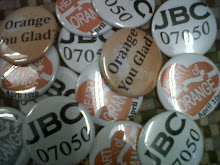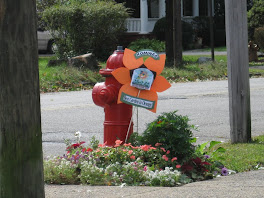UU Orange: Wrestling with Moses.
Rev. Darrell Berger
In January, 2010, members of The First Unitarian Universalist Church of Essex County and members of the greater Orange community met to discuss this book. It is about how Jane Jacobs and other residents of Greenwich Village organized in the 1960’s to stop Robert Moses’ plan to extend Fifth Avenue through the middle of Washington Square Park, meeting a lower Manhattan Expressway which would have destroyed the Village, Chinatown, Little Italy and SoHo.
This book is a primer for community organizing, as well as for understanding the history of urban renewal in New York City. This same battle extended into New Jersey, destroying many neighborhoods in Newark and the Oranges. By understanding this history, we can discover what is needed to recreate and revitalize urban communities today.
This Book Group was supported by the University of Orange’s People of Orange Leadership Institute for Sustainability (POLIS), which has received a grant from JP Morgan Chase.
For those who would like to participate in the Book Group from wherever you are, here are some study questions to stimulate discussion and self-reflection. If you’d like to get “credit” from the University of Orange, please send me your thoughts and I’ll send you back your certificate. The University of Orange is a free people’s university, and we graduate every year to a greater degree of responsibility for our communities. Our degree is the Bachelors of Freedom, otherwise known as the B.Free.
Wrestling with Moses
INTRO:Who was Robert Moses and what was he trying to accomplish in New York City in the early 1960’s?
Who was Jane Jacobs and why did she oppose Moses?
Chapter 1 – The Girl from Scranton:
What elements in Jane Jacobs’ early life helped her to become a successful writer in New York City? What elements worked against her?
What are the main goals of the urban renewal movement? Did Jacobs’ oppose all of them? If not, which did she support?
Chapter 2 - The Master Builder:
Compare and contrast the childhood and young adulthood of Jacobs and Moses. What were some of the things that might have made them natural adversaries?
What were some of Moses’ first successes in changing the landscape of New York City? Why did the Brooklyn Dodgers not get a new stadium, causing them to leave for Los Angeles?
Chapter 3 - The Battle of Washington Sq. Park:
What was Moses’ Vision for the transformation of Lower Manhattan?
How did opposition to his vision begin, and how did it grow?
Chapter 4 - Urban Renewal in Greenwich Village:
What are the four basic elements of a vibrant neighborhood?
How did both gentrification and historic preservation arise as a result of successful opposition to urban renewal?
Chapter 5 – The Lower Manhattan Expressway:
How did the Interstate Highway Act of 1956 effect cities?
How does just being under consideration for urban renewal effect neighborhoods?
Epilogue:
What other cities began to oppose urban renewal? How?
What has been the long-term effect of urban renewal on urban neighborhoods? How has opposition to urban renewal been sustained?
For Further Thought
How did urban renewal and the interstate highway system effect Orange?
How does the current battle over the Atlantic Yards project in Brooklyn resemble the Jacobs/Moses battle? How is it different?
How does H.A.N.D.S. and other community development organizations carry on the work of Jane Jacobs?
What can residents of Orange do today to help realize the four elements of vibrant neighborhoods?






No comments:
Post a Comment